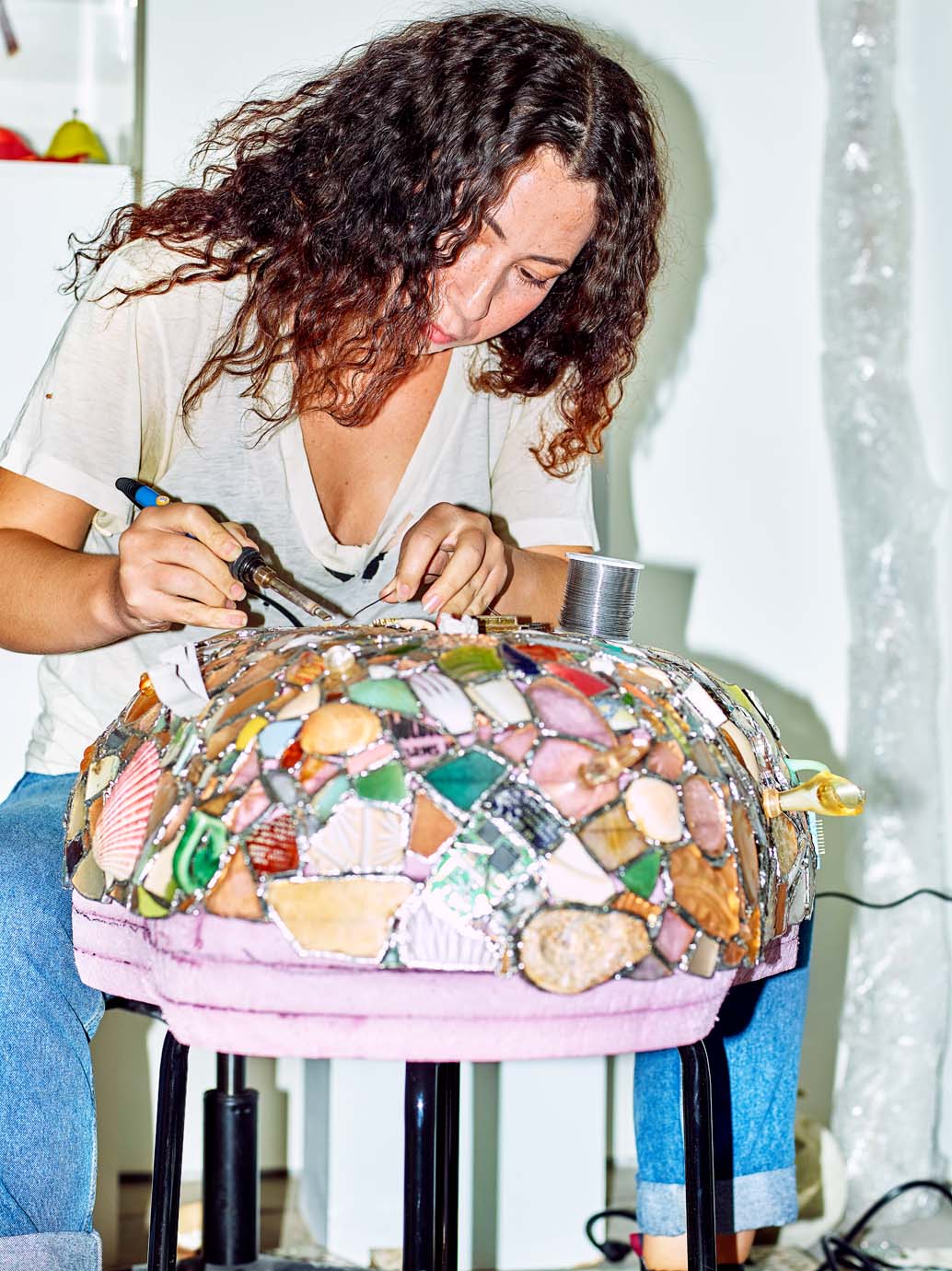
Bea Fremderman views the climate crisis as the central moral issue of our time. “I think, in the future, historians will look back and say ‘It’s crazy. They knew what was going on and didn’t act.’ That will be what our era is known for.” Fremderman casts a wide net in her approach to addressing man-made global warming, from revisiting scenes such as BP’s catastrophic “junk shot” during the 2010 Deepwater Horizon oil spill to leaping ahead, creating tools for earth’s potential climate apocalypse. The latter has resulted in works that combine repurposed natural and manufactured objects that question our relentless production to the point of catastrophe, brimming with the delicate dark humor that accompanies thoughts of one’s demise at the hands of nature.

A birdhouse made from an old shoe hangs on the wall in her Queens studio, accompanied by lint tableware and a cellphone wired to a broken branch; the result is a crude tomahawk. “If what we have now is all that we were to be left with, how would the future look?” the work seems to query. Most striking are her giant irregular sconces, patchworked together from an abundance of multicolored glass fragments, sand dollars and tech waste, and illuminated from within. A focal point at her first solo museum show, “Stranger Man,” at Atlanta Contemporary this year, these and other sculptures were part of a collaborative project with Loreta Lamargese at La Kaje in New York this November. They will also feature in her upcoming solo exhibition at Prairie gallery in Chicago next April.
Fremderman’s scavenged detritus—glass, cut-up credit cards, old motherboards and processing chips, shell and bone—comes from Dead Horse Bay, the result of an ill-conceived landfill built to connect Barren Island to mainland Brooklyn, just north of New York’s Rockaway Peninsula. “It’s like a mineral of Anthropocene; this is what a layer of our earth really does look like,” Fremderman says, pointing to a jagged piece of credit card emblazoned with the World Wildlife Fund logo. “We’ve created materials that will never break down ever again—things that will outlive the very worst-case scenario. Objects that will outlive humanity.”



